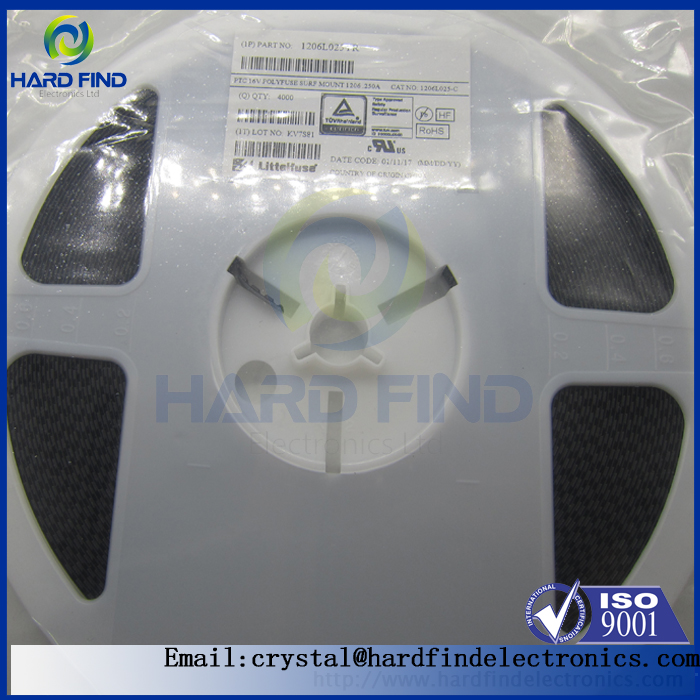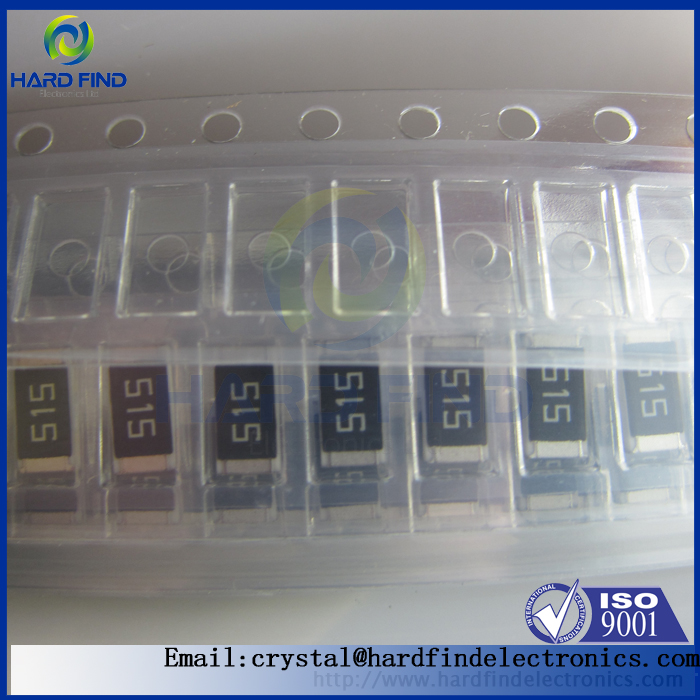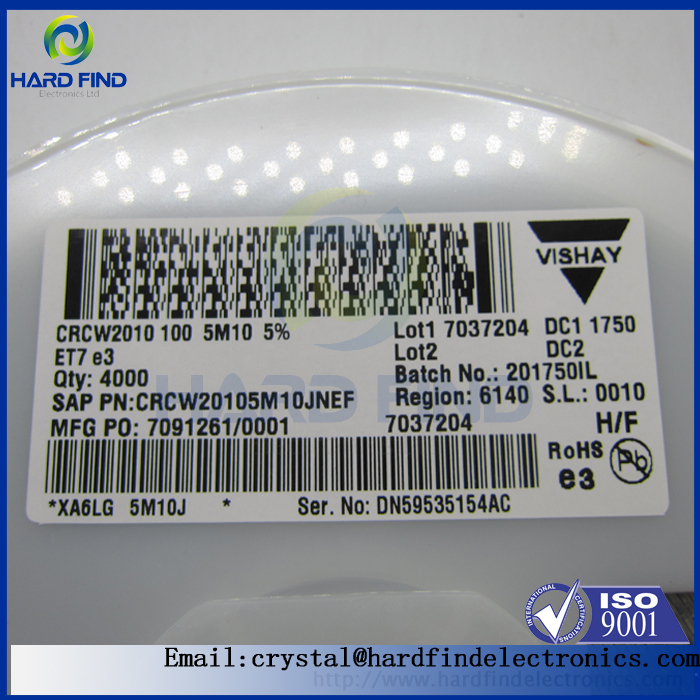Both thePTC Resettable Fuse and the ordinary fuse are controlled by the heat generated by the overcurrent in the sensing circuit. The ordinary fuse interrupts the current by melting, and the PTC limits the current by converting the low resistance into a high resistance. When selecting an overcurrent protection device, the following four factors are usually considered:
1) Resettable: The most obvious difference between the two is that the PTC is resettable. Usually the step took after the overcurrent is to power off first and then allow the device to cool down.

Littelfuse Inc Circuit Protection PTC Resettable Fuse 1206L025YR
2) Impedance: The product specification shows that the PTC has more than twice the impedance of the fuse when the rating is approximately the same. This feature is especially prominent when designing battery-powered devices. The increased power consumption of high-impedance devices will not only shorten the battery life, but will be traced to more frequent charging operations.

Littelfuse Inc Circuit Protection PTC Resettable Fuse 1206L025YR
3) Time/current characteristics: Comparing the time/current curves of the PTC and the fuse, the PTC's sensing speed is much slower than that of a normal fuse, and this is particularly acute in the extremely sensitive parts of the protection circuit.

Littelfuse Inc Circuit Protection PTC Resettable Fuse 1206L025YR
4) Size: The power density of ordinary fuses is much greater than that of PTCs. Fuses up to 5 amps can be packaged in 0603, and 2 amps are provided in 0402. Currently, 1206 package is under development and is dedicated to increasing current carrying capacity.
Related Products:
Littelfuse Inc Circuit Protection PTC Resettable Fuse 1206L025YR
Latest offer: Littelfuse 2017+ 0.022usd PTC Resettable Fuses 2-3days